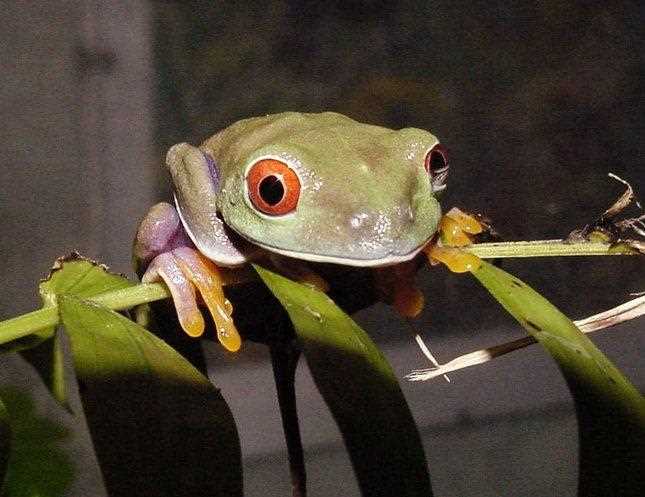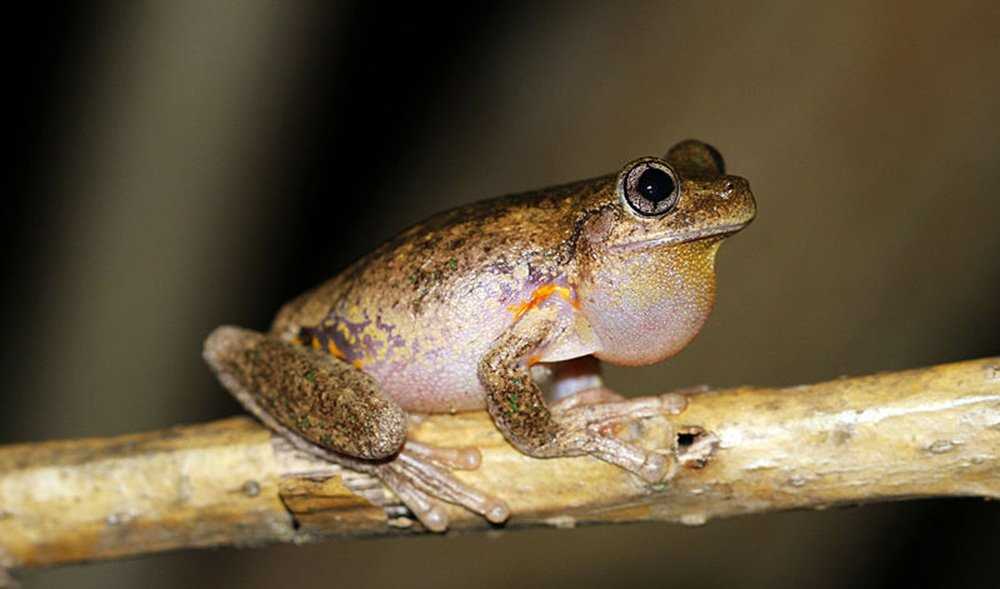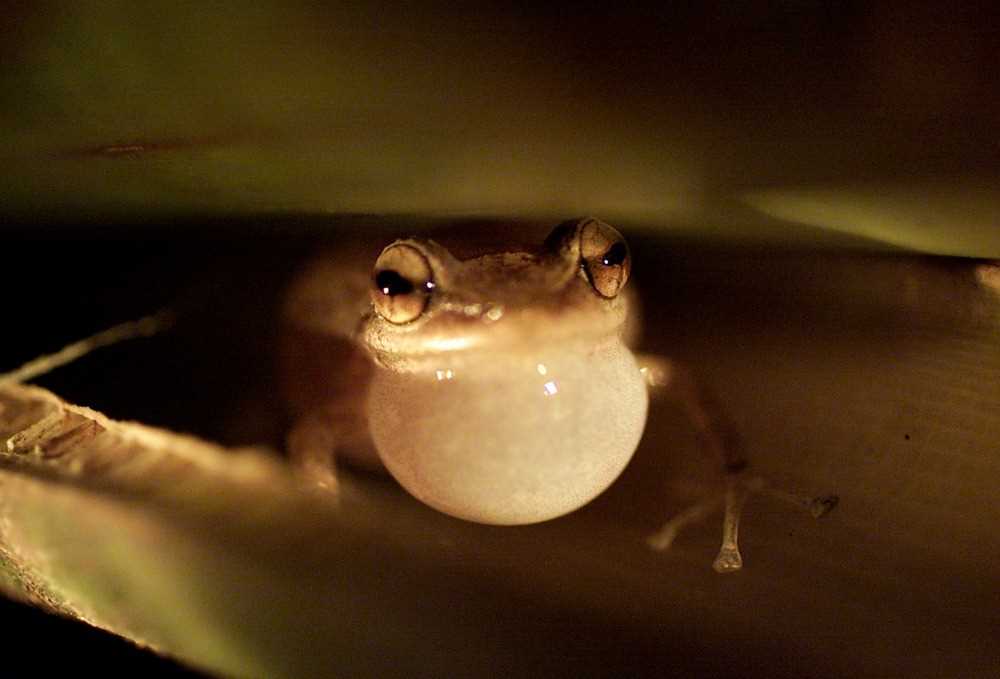When the sun sets and darkness falls, a magical symphony begins. The nocturnal world comes alive with the rhythmic croaks and ribbits of frogs. These amphibians, known for their extraordinary ability to thrive both on land and in water, use their unique vocal abilities to communicate and attract mates.
As night blankets the earth, the sound of frogs fills the air. The chorus of their calls creates a captivating melodic backdrop to the stillness of the night. Each species has its own distinct sound, allowing experienced listeners to identify which frogs are present in a given pond or wetland.
The main purpose of the nighttime chorus is reproduction. Male frogs use their vocal sacs to amplify their calls, producing deep resonating tones that can travel long distances. They compete with other males and hope to capture the attention of nearby females. The complexity and duration of the call can indicate the male’s size, strength, and overall fitness.
Listening to the frog chorus is not only a beautiful experience, but it also provides valuable information about the health of the ecosystem. The absence or decrease in frog sounds could be an indication of environmental changes or pollution. By paying attention to these unique night sounds, we can better understand and protect the fragile balance of nature.
Discover the Magical World of Frog Sounds at Night

Picture yourself near a tranquil pond, surrounded by lush greenery. The gentle swaying of the reeds and the rhythmic chirping of crickets provide a soothing backdrop. But amidst this peaceful scene, the true stars of the night emerge: the frogs.
With their exceptional vocal abilities, frogs produce one of the most captivating sounds in nature. Their famous croak and ribbit echo through the night, creating a symphony of sound that both mesmerizes and soothes the soul.
Each species of frog has its unique call, allowing them to communicate with one another and establish their territory. Some calls are high-pitched and piercing, while others are deep and resonant. These harmonious melodies intertwine, creating a captivating auditory experience.
So, next time you find yourself near a pond or wetland at night, take a moment to listen to the magical world of frog sounds. Allow yourself to be enchanted by their melodic chorus and immerse yourself in the beauty that lies within the darkness.
Why the Nighttime Chorus of Frog Sounds is Worth Exploring
The Green Night Symphony: Croaks and Ribbits

Imagine standing by a pond on a warm summer night, surrounded by tall grasses and dense vegetation. As you listen closely, you can hear the distinctive croak of a bullfrog, resonating through the still night air. Its deep, rich sound fills the air and sets the stage for the other members of the chorus to join in.
Soon, the chorus grows louder as other species of frogs add their own unique calls to the mix. The high-pitched ribbits of the tree frogs blend with the trilling sounds of the chorus frogs, creating a symphony of frog voices that is both enchanting and unique to each habitat.
A Window into the Secret Life of Frogs
The nighttime chorus of frog sounds offers a glimpse into the secret life of these amphibians. Frogs are predominantly nocturnal, meaning they are most active during the night. By listening to their calls, we can gain insights into their behavior, territorial boundaries, mating rituals, and even environmental changes.
Each species of frog has its own distinct call, serving as a way for males to attract females and establish their territory. Some calls are short and repetitive, while others are long and melodic. By identifying these calls, researchers can study frog populations, track their movement, and monitor the health of various ecosystems.
Exploring Nature’s Symphony
Listening to the nighttime chorus of frog sounds is a simple yet captivating way to connect with nature. Whether you’re in a rural area surrounded by ponds and wetlands, or even in an urban park, you can tune in to the symphony of frog voices that fills the night air.
Grab a comfortable chair, find a peaceful spot near a pond, and let the sounds of the frogs transport you to another world. Close your eyes and immerse yourself in nature’s orchestra, allowing the croaks and ribbits to transport you to a tranquil state of mind.
Exploring Different Frog Species and Their Unique Calls
From the deep, resonating bass of the bullfrog to the high-pitched trills of the tree frog, the range of frog calls is both fascinating and mesmerizing. Some frogs produce a croaking sound by inflating their vocal sacs and expelling air, while others create sounds by rubbing their body parts together. The variety of calls is a reflection of the frog’s unique anatomy and physiology.
As you listen to the nighttime chorus, you can differentiate between the calls of different species. Some calls may sound like a rapid series of chirps, while others may be long and drawn-out. This diversity adds to the captivating allure of the frog chorus, as you never know what sound you might hear next.
Tips for Listening to the Nighttime Frog Chorus

Listening to the nighttime frog chorus can be a truly mesmerizing experience. To fully immerse yourself in the nocturnal world of these amphibians, here are some tips to enhance your appreciation of their unique sounds:
| 1. Find a Quiet Spot: | Choose a location away from any loud noises or distractions, such as highways or urban areas. The tranquil ambiance will allow you to fully focus on the frog sounds. |
| 2. Visit a Pond or Wetland: | |
| 3. Go out at Night: | Since frogs are most active during the night, it’s essential to venture out after sunset. Their chorus reaches its peak during the dark hours, so be prepared for an enchanting symphony. |
| 4. Be Patient: | Listening to frog sounds requires patience, as it may take some time for the chorus to reach its full volume. Take a seat, relax, and allow yourself to become absorbed in the tranquil atmosphere. |
| 5. Identify Different Calls: | Pay attention to the different sounds and patterns produced by various frog species. Each amphibian has its own unique call, ranging from the classic “ribbit” to a melodic croak. Use a field guide or online resources to help you identify the frogs you hear. |
| 6. Bring a Notebook: | Take notes of the frog sounds you hear during your nighttime adventure. Jot down their distinct calls, the time of night, and any other observations you find interesting. This can be a great way to track your progress and deepen your knowledge of the nocturnal amphibians. |
By following these tips, you’ll be well on your way to immersing yourself in the enchanting world of the nighttime frog chorus. Don’t forget to bring your curiosity, patience, and a sense of wonder as you embark on this auditory journey through the nocturnal realms of nature.
The Science Behind Frog Sounds: How Do They Produce Their Chirps?

So, how do frogs produce these enchanting nighttime sounds? It all starts with their vocal sacs. These sacs, located near the throat, act as resonating chambers, amplifying the sound produced by the frog.
Each species of frog has its own unique call, which serves as a way for individuals to recognize one another. This is particularly important during the breeding season, where frogs gather in large numbers and need to find suitable mates.
Interestingly, the size of a frog’s vocal sac can vary between species. Some frogs have small vocal sacs, while others have larger ones that allow for louder calls. The color of the vocal sac can also vary from green to white, depending on the species.
In addition to vocal sacs, frogs also use other body parts to produce sounds. Some species have specialized toe pads that they can rub together to create chirping noises. Others may use specialized vocal cords or membranes on their bodies.
So, the next time you find yourself outside on a warm summer night, take a moment to listen to the captivating sounds of frogs. Each chirp and croak is not only a beautiful melody but also a testament to the incredible diversity and adaptability of these remarkable creatures.

I’m Lena Adams—a product of an unconventional upbringing in the African wilderness. My father, a daring explorer of African wildlife, sparked my fascination with reptiles, a passion that intertwined with the tragic loss of my mother during an expedition, leaving an indelible mark on my life. Driven to understand the creatures that captivated my parents, I embarked on my journey, sharing insights about reptiles, frogs, and lizards on my website. Through my explorations and conservation efforts, I honour my family’s legacy while seeking connections—to the creatures, nature, and the mother whose presence I yearn to understand.
